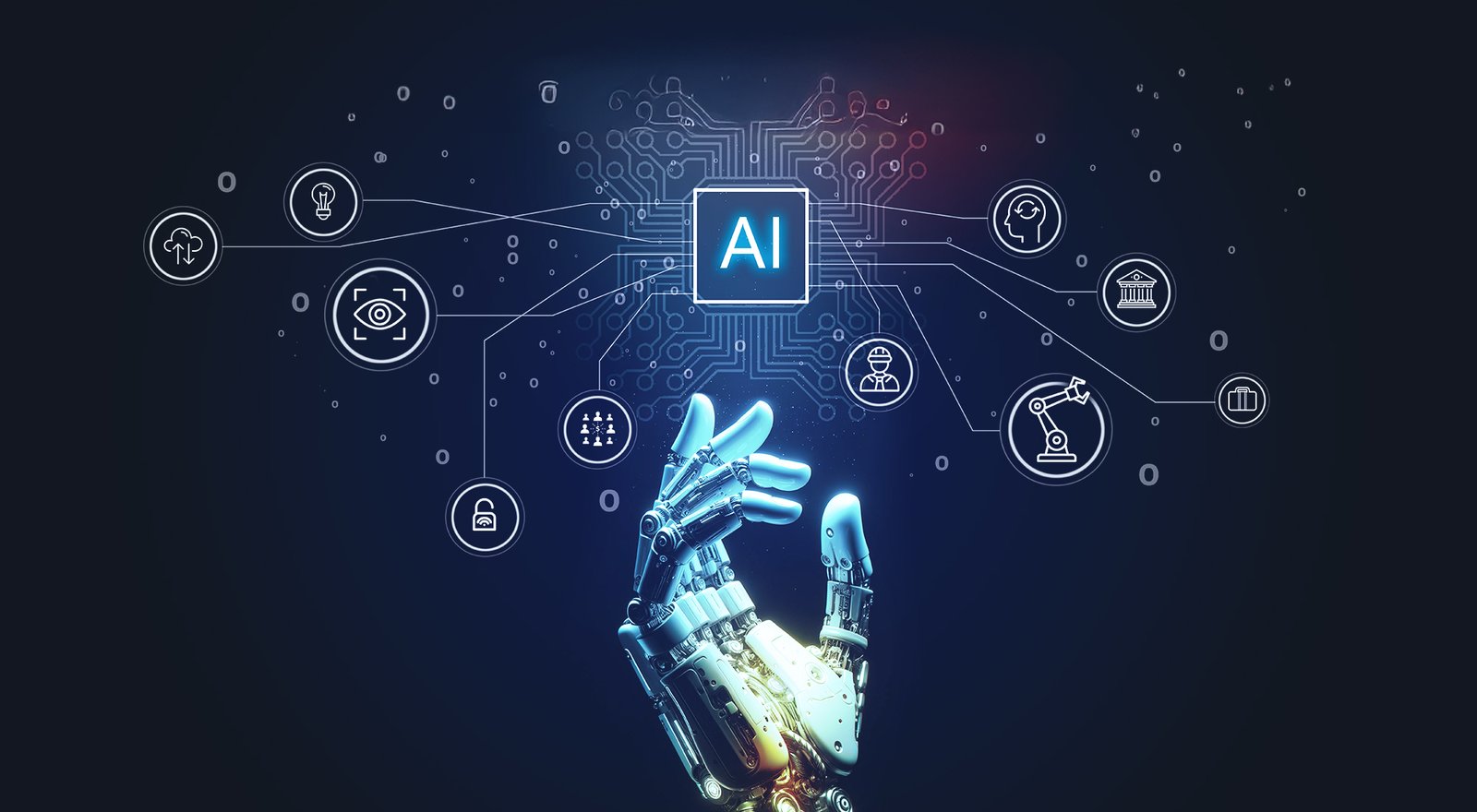The Role of Artificial Intelligence in Economic Progress
Artificial Intelligence (AI) has rapidly evolved from a futuristic concept to a transformative force in various industries. From healthcare to logistics, AI is reshaping how businesses and governments operate. In the context of the U.S. economy, economists and policymakers are beginning to explore how AI can address pressing fiscal challenges, including national debt, workforce productivity, and economic inequality.
The application of AI extends beyond commercial use, offering opportunities to optimize public services, enhance decision-making processes, and improve the overall fiscal health of the country. However, realizing this potential requires strategic investments, ethical considerations, and collaboration across sectors.
AI and Workforce Productivity: A Key to Economic Growth
One of the most significant ways AI can contribute to the fiscal health of the U.S. is by boosting workforce productivity. Automation and machine learning algorithms can handle repetitive tasks more efficiently than humans, freeing up workers to focus on higher-value activities.
For instance:
- Streamlining Administrative Tasks: AI-powered tools can automate routine processes such as data entry, scheduling, and payroll management, reducing operational costs for businesses and government agencies.
- Enhancing Decision-Making: By analyzing large datasets, AI can provide actionable insights that help businesses optimize their strategies, increase efficiency, and reduce waste.
- Upskilling the Workforce: Integrating AI into the workplace encourages the development of new skills, enabling workers to transition into roles that require creativity, critical thinking, and advanced problem-solving.
AI’s Role in Reducing Government Expenditure
AI has the potential to significantly reduce government spending by improving the efficiency of public services. Governments at all levels face challenges related to waste, fraud, and inefficiency. AI technologies can help address these issues in several ways:
- Fraud Detection:
AI algorithms can identify patterns of fraud in real-time, preventing financial losses in areas such as tax collection, healthcare, and social welfare programs. For example, AI can detect anomalies in tax filings or healthcare claims, enabling authorities to take corrective action promptly. - Predictive Maintenance:
By analyzing data from public infrastructure, AI can predict maintenance needs before issues become critical. This approach can save millions of dollars by preventing costly repairs and reducing downtime for essential services like transportation and utilities. - Optimizing Resource Allocation:
AI-driven models can help governments allocate resources more effectively, ensuring that funding is directed toward programs and projects with the highest impact.
Improving Healthcare Efficiency Through AI
The U.S. healthcare system is one of the largest drivers of government expenditure, and AI has the potential to revolutionize the sector. From diagnostics to treatment planning, AI technologies can improve outcomes while reducing costs.
- Faster Diagnosis: AI-powered tools can analyze medical images, lab results, and patient histories to provide faster and more accurate diagnoses, reducing the need for costly and invasive procedures.
- Personalized Treatment Plans: Machine learning algorithms can identify the most effective treatments for individual patients, minimizing trial-and-error approaches that drive up healthcare costs.
- Administrative Automation: AI can streamline administrative processes such as appointment scheduling, billing, and record-keeping, reducing overhead costs for healthcare providers.
Addressing Economic Inequality with AI
Economic inequality remains a significant challenge for the U.S., with disparities in income, education, and access to opportunities. AI can play a role in addressing these disparities by:
- Improving Access to Education: AI-powered educational platforms can provide personalized learning experiences, enabling students from all backgrounds to acquire skills and knowledge tailored to their needs.
- Enhancing Job Matching: AI-driven job platforms can connect workers with opportunities that align with their skills and interests, reducing unemployment and underemployment.
- Supporting Small Businesses: AI tools can help small businesses optimize their operations, improve customer engagement, and compete more effectively with larger corporations.
Challenges and Risks of AI Adoption
While AI offers numerous benefits, its adoption comes with challenges and risks that must be addressed to ensure equitable and sustainable outcomes.
- Job Displacement:
The automation of tasks traditionally performed by humans could lead to job losses in certain sectors, particularly for low-skilled workers. Policymakers must invest in reskilling programs to help displaced workers transition to new roles. - Data Privacy and Security:
The widespread use of AI relies on the collection and analysis of vast amounts of data. Ensuring the privacy and security of this data is essential to prevent misuse and maintain public trust. - Ethical Concerns:
AI algorithms can unintentionally reinforce existing biases or create new ones if not properly designed and monitored. Efforts must be made to ensure that AI systems are fair, transparent, and accountable. - Digital Divide:
The benefits of AI are not evenly distributed, with rural and low-income communities often lacking access to the necessary technology and infrastructure. Bridging this divide is crucial to preventing further economic disparities.
Investing in AI Research and Development
To fully realize the potential of AI, the U.S. must prioritize investments in research and development (R&D). This includes funding academic institutions, private companies, and public initiatives that focus on innovative AI applications. By fostering collaboration between government, industry, and academia, the U.S. can maintain its position as a global leader in AI technology.
AI and Climate Change: A Dual Benefit
In addition to its economic impact, AI can also play a role in addressing environmental challenges, which have long-term fiscal implications. By optimizing energy consumption, improving supply chain efficiency, and enhancing climate modeling, AI can contribute to both economic growth and environmental sustainability.
- Smart Energy Management: AI can optimize energy use in homes, businesses, and industrial facilities, reducing costs and greenhouse gas emissions.
- Sustainable Agriculture: AI-powered tools can monitor crop health, predict yields, and optimize irrigation, reducing waste and improving food security.
- Disaster Response: AI can analyze weather patterns and historical data to predict natural disasters, enabling governments to allocate resources more effectively and minimize economic losses.
Global Competitiveness and AI Leadership
The global race for AI leadership is intensifying, with countries like China and the European Union making significant investments in AI development. For the U.S. to maintain its competitive edge, it must adopt a proactive approach to AI adoption and regulation.
- Policy Frameworks: Developing clear and consistent policies for AI use can encourage innovation while addressing ethical and legal concerns.
- International Collaboration: Partnering with other nations to establish global standards for AI can ensure its responsible and equitable use worldwide.
Conclusion: Harnessing AI for a Stronger Fiscal Future
Artificial Intelligence has the potential to revolutionize the fiscal health of the U.S. by boosting productivity, reducing government expenditure, and addressing economic inequality. However, achieving these outcomes requires careful planning, investment, and collaboration across sectors.
By addressing challenges such as job displacement, data privacy, and the digital divide, policymakers can ensure that AI benefits all Americans. With a strategic approach, AI can serve as a powerful tool for creating a more efficient, equitable, and sustainable economy.
As the U.S. navigates the complexities of AI adoption, the focus must remain on leveraging its potential to improve lives, strengthen the economy, and maintain global leadership in innovation.





Leave a Comment